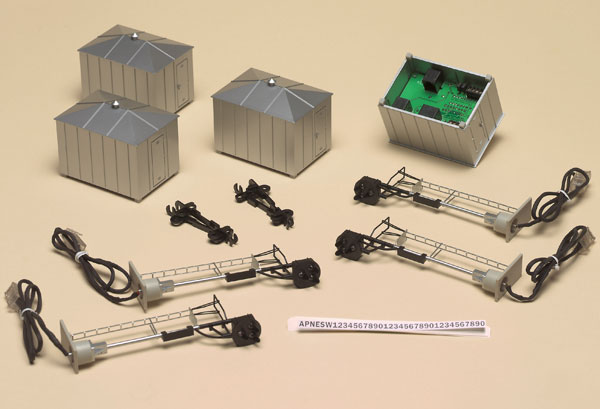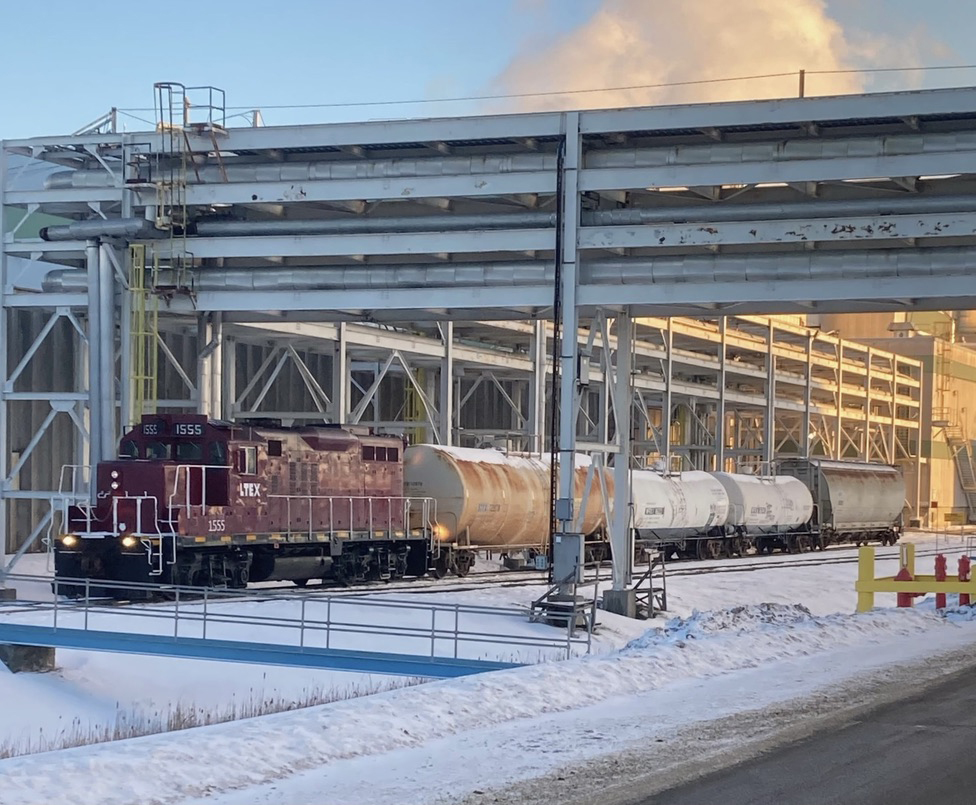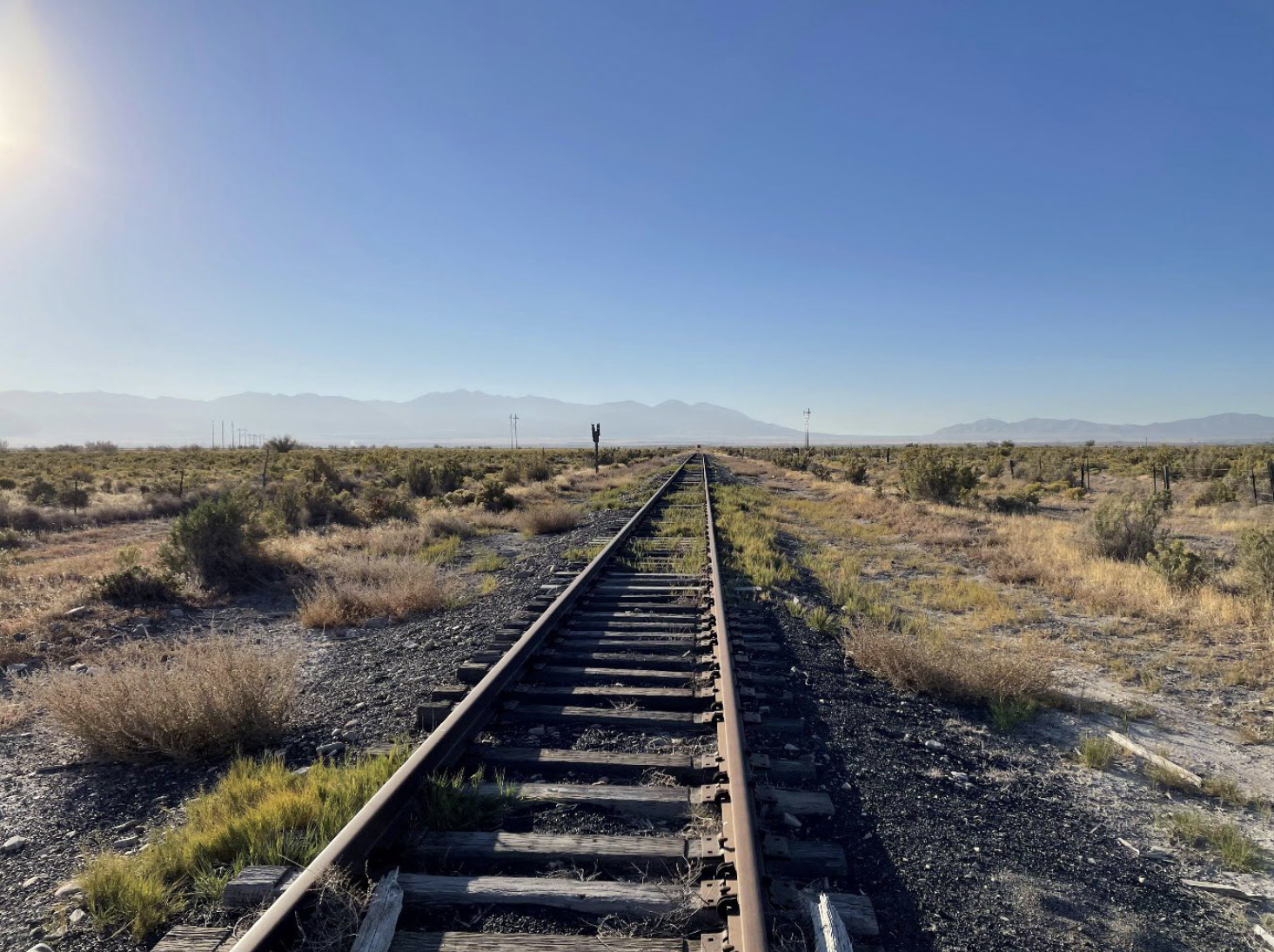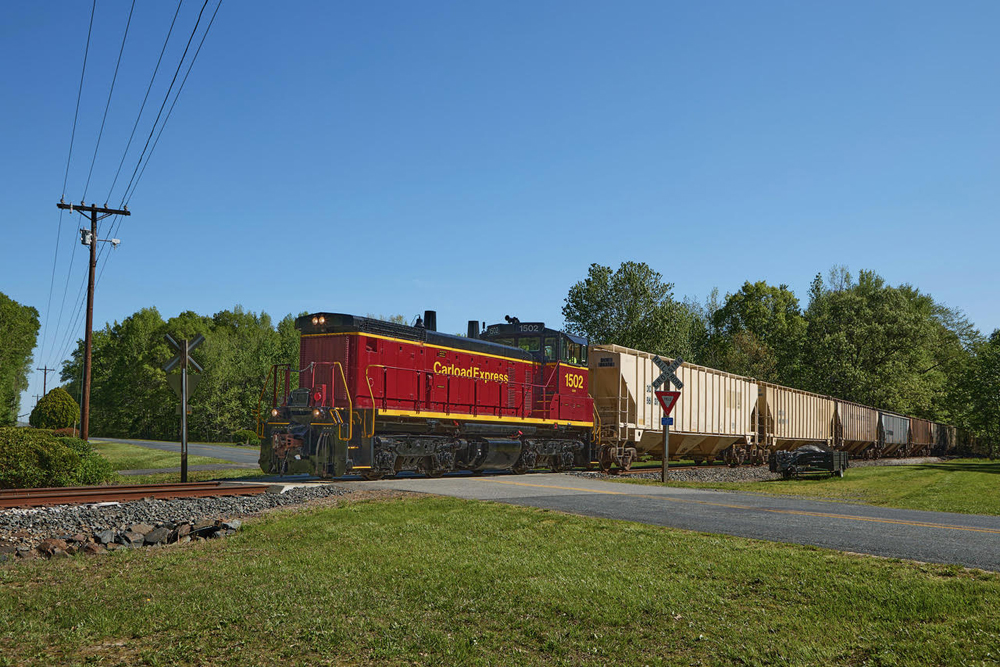Yes, but in real railroading this basic concept also is applied in layers – envision the signaling on a bi-directional main line with plenty of switches, crossovers, and perhaps a yard lead or two. And, while U.S. railroads today use a standard track gauge, they don’t necessarily use standardized signal lights.
In the toy train world, signals – activated by relays, insulated sections of track, or under-track contactors – are nothing new. Atlas O, however, is the first major toy train manufacturer to offer in one box an integrated signal system, where the movement of an O gauge train affects not just one signal light, but signal lights in adjoining blocks, just like on a real railroad.
Atlas O’s 21st Century Signal System can be operated in four different modes.
First off, each signal can work in a traditional, independent manner. As a train crosses a section of insulated outside-rail track, the signal lights change from green to red, then (using a built-in digital timer) to yellow, and finally to green again. Operation is similar to signals offered by other manufacturers and not that far removed from the operation of postwar Lionel signals.
In a second mode, the Atlas O signals are integrated. Each signal is connected to the next one down the line with a plug-in cord similar to a telephone extension line. As a train passes one signal, other signals behind the train change accordingly, passing along information about the status of the track ahead.
The telephone-style cord takes care of all the signal communication, and it bypasses each signal’s yellow-light timer. In effect, the signal lights won’t change until the status of the track ahead changes as a train clears a block. This is just how signals work in the real world.
A third mode goes a stage deeper. On some railroads, the entire signal remains dark when there are no trains around, lighting up only as a train approaches. Atlas O’s signals have this “dark” mode.
Lastly, Atlas O calls the final mode “complex signaling.” This level of sophistication comes into play on layouts where signals control combinations of areas, such as yards, crossover tracks, and dual or bi-directional main lines.
Atlas O’s signaling system was developed in conjunction with Custom Signals (go to www.customsignals.com, or call 845-643-1318), a manufacturer of prototype scale-model signals and signaling devices for O gauge hi-railers and 2-rail O scale modelers. Atlas O signals are compatible with Custom Signals products, for operators who wish to model signaling on their layouts as prototypically as possible.
Regardless of which of the four modes you choose, the Atlas O signals are designed to activate using a section of 3-rail track with an insulated outside rail. While you can use other detection methods, such as infrared devices, you’ll likely need to add a relay to the activation mix, all of which adds more wire to the underside of your layout.
Each three-color signal, modeled after those known as “Type G,” uses its own control board, which is hidden inside a trackside electrical shed. If you don’t like the look of the shed, you can remove the board and mount it beneath the surface of your layout. The entire system works on AC or DC power between 5 and 22 volts.
The control boards can be connected to each other with Atlas O Signal Cables, which, as previously stated, are a lot like telephone cords. They are sold separately in lengths of 7, 15, and 25 feet.
I wired all four signals in integrated mode, and each responded appropriately on my first try. Inserting the cables into the underside of the sheds was a little tricky, and I had to bend each wire at a 90-degree angle since the cable-jack openings are mounted sideways instead of facing out.
Each signal also needs a pair of power feeds (20 or 22 gauge wire) and an additional wire running to a track section with an insulated outside rail. The wires connect to mini screw terminals, so you’ll need a set of miniature screwdrivers and, if you’re like me, your reading glasses.
Atlas O sells its “Type G” signals individually and in a four-pack. It also offers a two-light dwarf-style signal. Atlas O should be praised for bringing the complexities – and perhaps more important, the wiring – of signaling down to the level of the typical operator.














